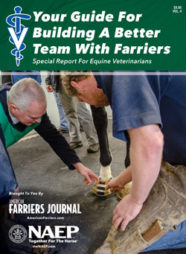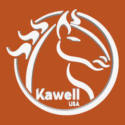Within and outside the farrier industry, everybody has a different opinion on tariffs. A recent AFJ poll found that many see no cause for concern as they’ll pass any price increases off to their clients. The other half of respondents are either concerned for their bottom line or horse welfare. Though manufacturers, distributors and farriers may be able to pass on higher costs, many horse owners cannot.
“The tariffs will affect the farrier industry, especially aluminum as the main foundries are not in the U.S.,” says Wyoming farrier Jeremy Manley. “This means raw materials could increase 25%, and each step in the process will require an increase. By the time it gets to the farrier to pass on to our clients, it may mean the difference between doing the best thing for the horse and doing nothing.”
According to Eric Nygaard, owner of New Farm Farrier Supply and past president of the American Farrier’s Association, as of April there’s been no word yet from distributors like FPD and Mustad about price changes. After a recent announcement by President Donald Trump that paused certain tariffs for 90 days while increasing tariffs on Chinese goods to 125%, markets remain uncertain.
As Trump points out, his goal of returning production to U.S. soil would take time and could be a rocky road. In the meantime — especially the weekend before the federal tax filing deadline — it’s difficult not to think about personal finances. As the American Farriers Journal team is compiling responses from the 2025 Farrier Business Practices survey, we noticed a few relevant trends.
Many farriers wait until their 30s or 40s before starting to save for retirement. Trying to save a lot in a short amount of time can be difficult, stressful and, if you’re investing in high-risk stocks, uncertain. It’s better to put away small amounts consistently and larger ones when you can to prepare for a life after shoeing, whether it be because of retirement or an accident. Read “Financial Planning is Your Future, Your Responsibility,” to learn more.
While the full analysis of your responses will be available in the July/August issue, it’s also clear that many farriers are under-charging compared to their peers. This can be for many different reasons, and it’s important to charge clients a fair amount based on factors unique to your business. Though, one poll respondent pointed out that prices set too low can hurt not just that farrier but the ones around them.
“There’s an influx of new graduates in my area,” says Pennsylvania farrier Thomas Siegenthaler. “Already, they have their prices way below the Northeast average. This will make it difficult for established farriers to regroup tariff increases.”
At a recent AFA certification, Iowa State farrier Doug Russo discussed the importance of a long apprenticeship after graduating from shoeing school. One of the benefits he cites is it allows farriers to establish good, reliable clientele at higher prices before going off on their own.
“If you’re not planning to go the route of an apprenticeship, you’re looking at a year to two years to build a clientele,” he says. “And in that time, you’re going to have to weed out the dregs and the nasty horses and the clients that don’t pay. It makes better sense to have your mentor do that for you because they’ve already developed that reputation.”
Read the May/June issue of American Farriers Journal for more insight from AFJ readers on recent tariffs, and share your thoughts in the comments about financial planning.







